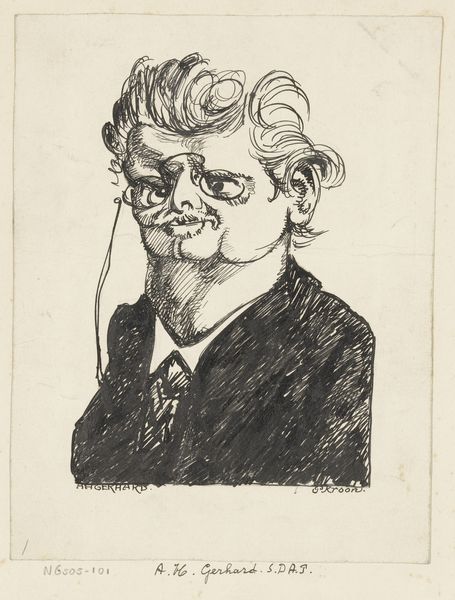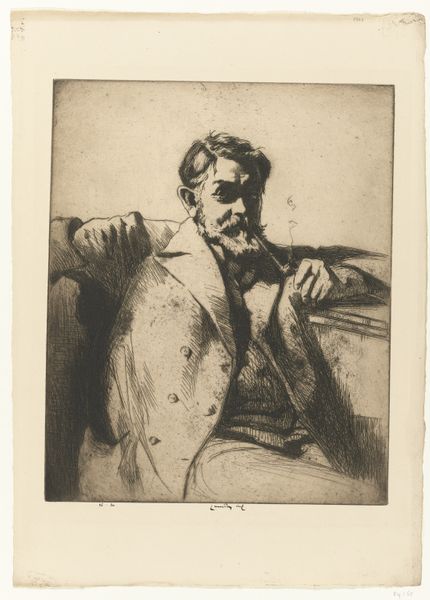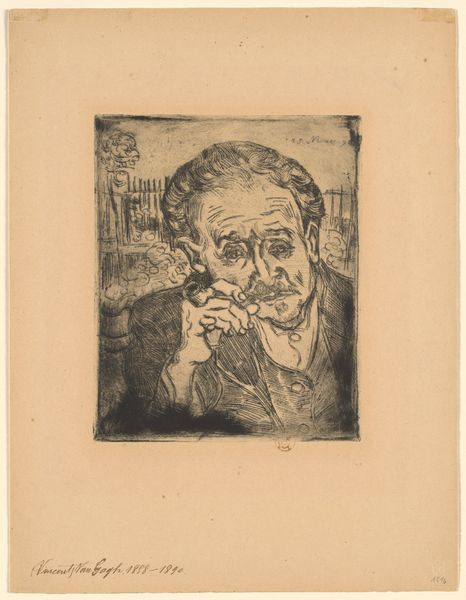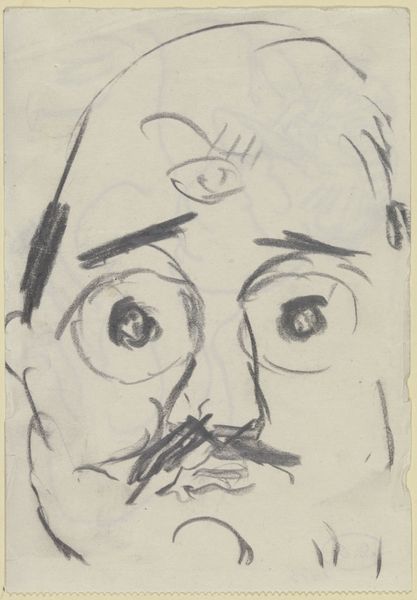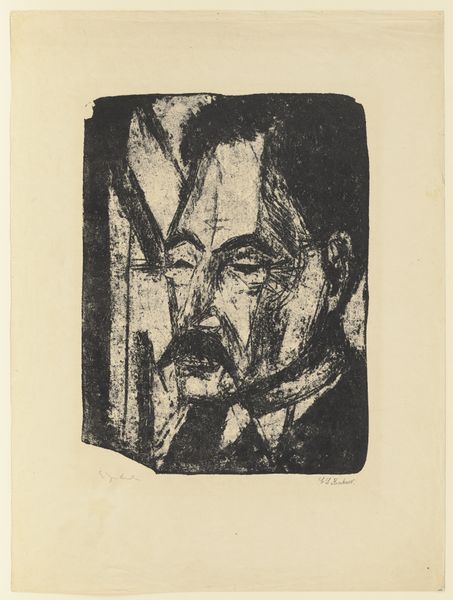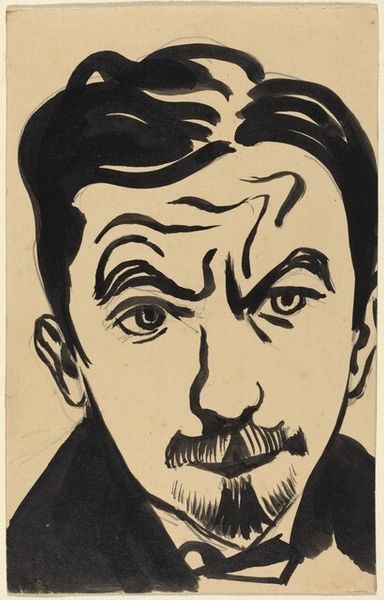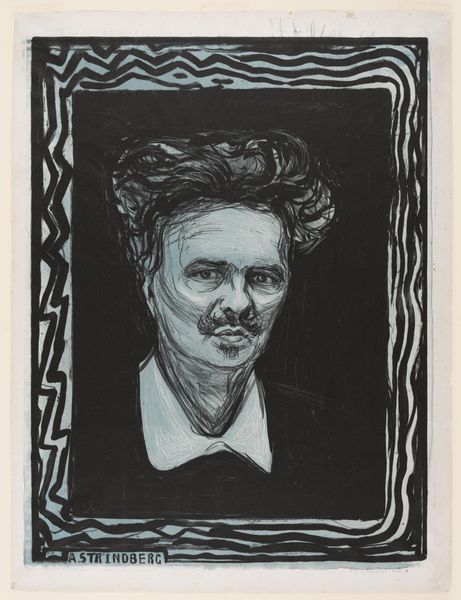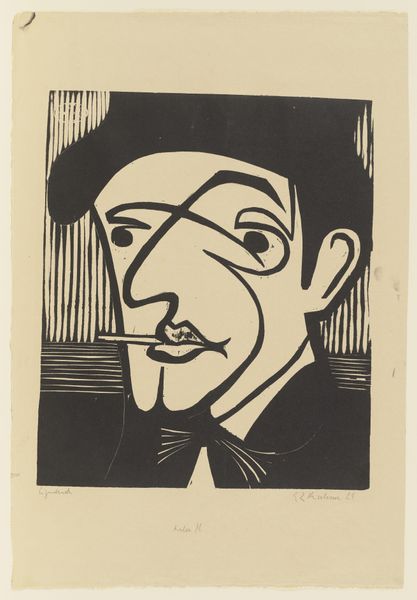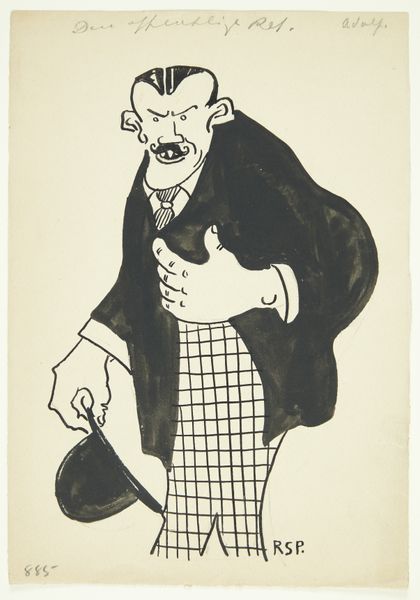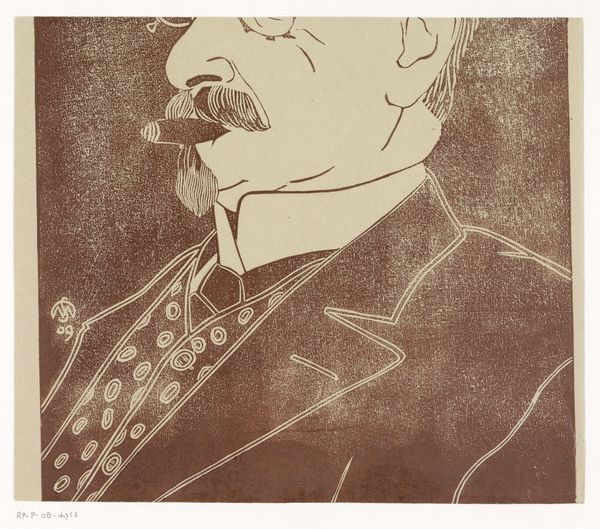
print, woodcut
#
portrait
# print
#
caricature
#
expressionism
#
woodcut
Dimensions: height 473 mm, height 358 mm
Copyright: Rijks Museum: Open Domain
Curator: Samuel Jessurun de Mesquita created this woodcut, "Self-Portrait with Hand on Moustache," in 1917. The print exemplifies his style, sitting at the intersection of portraiture and expressionism. What springs to mind for you when you first look at this work? Editor: Intriguing! The first word that jumps out is "brooding," even with that fantastic moustache practically begging to be twirled. He looks caught between a smirk and deep thought. It makes me want to know what was going through his head when he created it. Curator: It's interesting that you see that internal tension. Considering the historical moment—1917, amidst the devastation of World War I, with the rise of anxieties regarding modern identity—perhaps that 'brooding' quality speaks to a broader societal feeling. Mesquita, as a Jewish artist in Europe at the time, would have been especially attuned to rising xenophobia and the fracturing of social bonds. Editor: Absolutely, and that sharp contrast inherent in the woodcut technique only accentuates it. I mean, there is zero subtlety—it's all hard edges, literally carving out the nuances of his inner life for the viewer. The lines on the face feel deeply etched—both in the block, and figuratively onto his character. Curator: Yes, the stark contrast highlights the psychological intensity, something he clearly shares with other expressionist artists of the time, who really used those hard lines to capture the anxiety and disillusionment that defines modernity. Editor: Looking closer, it is really moving to see how the detail is focused on the face. Everything else – his suit, even his hair – falls secondary. All those lines converging onto his gaze! Almost a dare, I think. Curator: I concur with your sentiment regarding that intensity. The gaze does feel confrontational. The intersectional approach—viewing the work through the lens of historical, social, and identity-related elements—reveals layers of significance. Editor: I leave seeing an intimate and courageous act, one that somehow manages to reflect its particular moment and speak volumes about the endurance and strength of the human spirit in moments of conflict. Curator: I find myself rethinking art's potential as a form of resistance. It underscores the role of marginalized identities as sources of immense creativity, challenging prevailing systems of power.
Comments
No comments
Be the first to comment and join the conversation on the ultimate creative platform.


